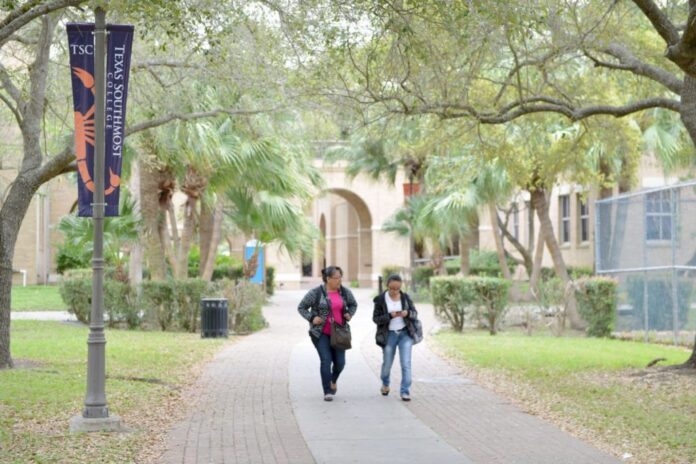Brownsville Navigation District commissioners on Monday voted 3-2 to approve a non-binding Memorandum of Understanding with Texas A&M University System (TAMUS) and Texas State Technical College to collaborate on a workforce training center at the Port of Brownsville.
Commissioners Ralph Cowen and Steve Guerra voted against the MOU during the noon special meeting. Cowen, in comments before the vote, said he could not vote in favor of the agreement as long as it contained stipulation that BND cover the full cost of construction of the new facility.
“If we could just take out that we will pay for the building, I’m all for it,” he said. “I think competition is good. It raises the bar. I have no problem with Texas A&M coming here. I want them here. I want TSTC to come in here and TSC. I want everybody here.”
Guerra said before the vote that “we all want Texas A&M here” but that he also had issues with BND shouldering the whole cost of the training center, which would be located on BND land.
“We’re the poorest community in the United States,” he said. “To have to pay to build it, it’s very difficult to justify that to the taxpayers.”
Guerra said he also wanted Texas Southmost College to have a “fair shot at the table.” Though it does not specifically mention TSC, the document states that “nothing in this MOU precludes BND from making the Facility available to users other than (TAMUS) or TSTC, such as public-school districts, community colleges, and workforce development providers in and around Cameron County.”
TSC President Jesus Roberto Rodriguez held a July 24 press conference to protest the MOU, arguing that the community college should be the port’s “primary partner for workforce training.” Later that day, BND commissioners voted to table the MOU agenda item because there weren’t enough votes to pass, according to BND Chairman John Reed.
Rodriguez and other TSC representatives took turns at the podium prior to Monday’s vote before a packed house in the BND board room, making a pitch for TSC to be part of the agreement based on its capabilities. Other public commenters argued against the MOU, echoing the sentiments of Cowen and Guerra. Several others argued for it, however, including state Sen. Eddie Lucio Jr., who urged the commissioners to unanimously approve the MOU to send a clear message to TAMUS.
“This opens the door for partnerships with any technical or junior college institution as well,” he said. “In my opinion there can never be too many opportunities for higher education in the Rio Grande Valley.”
Noting his strong support for community colleges as a state official over the decades, Lucio said nevertheless that “the Texas A&M System is the only system poised to take action immediately. … There’s no doubt where I stand in support of junior colleges. However, we have a chance to have the presence of two major flagship universities in this community.”
In a July 31 letter to Rodriguez, after the press conference and BND’s vote to table the MOU, TAMUS Chancellor John Sharp said the system would “go to another location” with its training center. On Aug. 2, Terry Ray, former owner of Terry Ray Construction, a close friend of Sharp and incoming chairman of the TAMUS Chancellor’s Century Council, said he was lobbying the chancellor to reconsider and that there was a possibility the agreement was salvageable.
Reed had hoped for a 5-0 vote Monday to underscore the port’s seriousness about pursuing further talks with TAMUS. Emphasizing that the MOU is non-binding, he said continued discussions may reveal other options for covering the cost of construction as opposed to BND paying for everything.
“This MOU is not about a building,” Reed said prior to the vote. “This MOU is not about leaving TSC out. This MOU is about having the opportunity to bring one of the finest universities in the country to help with workforce training. It is about continuing a discussion with Texas A&M about how all this will proceed. We have to have a seat at the table.”
After the meeting had adjourned, Reed expressed hope that the 3-2 vote in favor of the MOU would be enough to bring Sharp and TAMUS back to the table.
“I pray it is. I don’t know. I’ve got my fingers crossed,” he said. “(Sharp) knows there’s a big need for it, and there’s lots of way to skin a cat. Unfortunately people got fixated on a building instead of the vision. And there are lot of ways that building could possibly have been paid for, but we weren’t even there yet. We’re still in the process of trying to figure this out.”




